On the heels of our recently published article: 8 Reasons Retail is Migrating to Cloud Phones, Matrix Networks is taking a step back to discuss the value of building a modern network for retail. This article focuses on a network that is optimized for cloud voice migration and adoption. In this article you will learn the value of building a reliabile wide area network that improves bandwidth, enhances the user experience, while saving money and increasing sales! Enjoy.
Companies of all sizes are enjoying the benefits of Unified Communications platforms delivered from the cloud. The tools are fantastic for improving collaboration, integrating databases, providing Instant Messaging and much more. Unfortunately, these tools have limited application in a multi-site retail environment where call groups, parked keys, low cost solutions and simplicity still rule the day. This gap in vision has left many of our clients stuck on unreliable aging systems, with limited support and none of the UC features that could be useful, like SMS and large conference calls. In this article, we explore how Retail can take advantage of the new technology without breaking the bank.
Selecting a new cloud based phone system is complex, with many options, including regional providers, international pure cloud offerings and traditional phone system providers modified offerings. These products have broad overlap, making it difficult to determine the unique value of the different platforms. Our job at Matrix Networks is to help our clients understand their communication needs and match them with the appropriate provider. In this article we focus on 8x8, an industry leader consistently ranked at the top of Gartner's magic quadrant.
Amazon officially launched Amazon Web Services (AWS) in 2006, marking a significant pivot in the traditional way that organizations set up their infrastructure. For AWS the plan was simple: tackle the market’s growing desire for self-service computing and take a healthy bite out of the 100 billion dollar industry associated with on-premise servers and other associated hardware purchases.
If you read our previous article <Hunt Groups vs WorkGroups>, you may have decided that a hunt group is the best choice for your company's call flow. To refresh your memory, Hunt Groups are primarily used for a group of receptionists or a specifically functioning team, for example, your HR team, where a group of people could conceivably handle any sort of call that comes in and the group has the specific need to handle multiple calls at once.
Early this morning Mitel announced an agreement to purchase ShoreTel in an all-cash deal worth about $430 million. The plan is to acquire all of ShoreTel's outstanding shares at a price of $7.50 per share, followed by a merger of the two companies. This merger will not require approval of ShoreTel's stockholders but will require a regulatory review before it can close. This is big news in the telecom industry, especially since the amount is $110 million less than what Mitel offered ShoreTel shareholders about three years ago. If approved, the merger will make "MoreTel" the 2nd largest player in the UCaaS market (Mitel + ShoreTel = MoreTel).
Team messaging applications, starting with Slack, have made a huge impact on the direction of Unified Communications. Since Slack launched in August of 2013 most businesses have adopted or experimented with the use of the product or a similar product. The surprising thing about this trend is that it is almost entirely driven and inspired by users, not managers or IT wizards. This is good news for managers who are looking for a way to improve teamwork: people actually want to do this!
If you have explored replacing your communications solution in the last 2 years you have likely faced the question, Hosted vs Premise delivery? If you believe the industry hype, the only real option is moving your phone system to a cloud solution. There can be substantial value in moving to a cloud phone system, but to assume it is the right solution for every business is foolish. In this article we discuss why some organizations might choose one over the other, and using ShoreTel as an example, we will showcase one solution that has adapted well to the new market shift.
Over the past 6 years Unified Communications, or UC, is a buzzword that has swept over the business landscape like a rising tide through a reef pool, making its way into every nook and cranny and finding its place cross-departmentally in almost every industry. The trend is undeniable, and the value is real, but what good is UC if you don't know how to use it?
Connectivity as a Service Explained ~ MCaaS vs. SD-WAN
SD-WAN, or Software-Defined Wide Area Network, uses new SDN technology to connect organizations’ networks – everything from retail locations to data centers, and beyond. Its ability to provide active-active failover is a huge draw to many organizations, as it provides arguably the first true zero-downtime WAN solution. There is no doubt that SD-WAN will become a more prevalent solution in the years to come, but the question now: what is the best way to go about implementing it for your organization?
Most of us have heard of SD-WAN and understand that it can have a huge impact on our networks and the way our businesses operate. What is SD-WAN? SD-WAN is best defined as traffic monitoring and management from physical devices to the application itself, capitalizing on flexibility and agility. This intelligent routing is abstracted into a virtual overlay, enabling a secured pooling of both private and public connections allowing for automation, centralized network control and real-time management across multiple links. In other words, it is able to take multiple sources of internet, optimize them, control the network flow and provide seamless failover. Sounds pretty great, right?
*as long as you have Office 365...
Alright Already! Skype for Business gives me all the tools I need to be productive at work while allowing me the flexibility to remain connected on the road; it truly is a great communication solution. There, I said it. I’m finally ready to admit it…
A lot of thought needs to go into your call flow configuration to ensure a smooth process for your clients as well as making sure the calls get to the right person within your organization. With this article I will focus mainly on the best practices for setting up your Workgroups.
There are right ways and wrong ways to use Unified Communications (UC). The vast majority of companies and employees underutilize their UC platform in terms of how it can increase productivity. UC platforms such as ShoreTel, RingCentral and 8x8 are designed to optimize business processes. Do you really feel more efficient since you installed that application on your computer or mobile device? To truly get your money’s worth out of your communications platform, and experience all the benefits that were promised pre-sale, you need some pointers on how to use UC to work smarter, work faster, and work together. The ideas below are just the tip of the iceberg when it comes to functionality; they are written primarily to spark your creativity in bringing out the best in your UC platform.
Unified Communications has evolved rapidly over the last 15 years, redefined again and again. Initially if voicemail was received in your email inbox and the system included a basic communicator client it was considered UC, but as technology evolved so did this definition. This slow creep of features developed into a requirement for web/video collaboration, Instant Message, Fax, SMS, Calendar integration and much more. The result is a confusing mess of different clients and tools inhibiting adoption and creating a blackhole of communication. Intuitive integrations to your core tools are critical to gaining adoption and seeing value from a UC product set.
On March 21st of 2017 the Toshiba dealer channel received letters announcing the wind down of the Telecommunications System Division (TSD.) In plain English, Toshiba Telecom (Toshiba IP Phone Systems) is shutting down their operations, leaving their customers and value added resellers in a tough spot. This is an important lesson to learn as the industry continues to evolve to cloud-based platforms. The common belief across industry insiders is this is just the first domino to fall in the legacy phone system market as the new platforms and offerings continue to disrupt.
Cloud Phone systems, also known as Hosted Phone Systems, are the choice solution of enterprises large and small with 70% having made the move or planning to make the move per Information Week. The reasons for this vary dramatically based on the specific business and sector they belong to. Cost savings and productivity top the list.
5 Common Misconceptions about Wi-Fi
Wireless internet has become a critical component for businesses of all types. Although the technology has improved dramatically over the last decade, there are many misconceptions about how to get best performance. This article is focused on giving you some simple tips for ensuring your wireless network is on the right path whether you are an Fortune 500 business or a Motel 6.
BrightMetrics is a reporting and analytics tool designed specifically to augment the ShoreTel phone system. At Matrix Networks we believe so much in this solution that we offer it as part of our Advantage+ ShoreTel Partner support, providing all the tools our clients need to gain insight and troubleshoot challenges. Although there are many reasons to use BrightMetrics and ShoreTel together here are three of our top reasons!
As I described in my previous post, it really sucks to work with carriers. A lesser known alternative solution, called “Connectivity as a Service” has started to evolve to replace direct carrier relationships, improve the support experience drastically, and introduce value-added services.
Dial Tone Carriers and Internet Service Providers (e.g. Comcast, CenturyLink, Frontier, Integra, etc.) are necessary evils in the world of IT Directors, CIO’s and Telecom Managers. Every business relies on connectivity, but at the same time they hate the people who provide their connectivity. On their list of “Vendors We Wish We Could Fire,” carriers are at the top. Too bad they can’t.
ShoreTel Support is the service provided to ShoreTel clients to support, upgrade, and maintain their existing on-premise ShoreTel solution. Whether you are in a blended environment or entirely on-premise, ShoreTel requires this support to ensure your system is current and well maintained. The support model is a well developed concept but can be complex to outsiders and clients. In this article we aim to give you a better understanding of what ShoreTel Support really is.
Unless you have been hiding under a rock for the last 15 years you have watched the evolution of SMS text messaging from the days of pagers to iMessage and GIFs. The SMS world has brought smiley faces, acronyms, and text speak into our world at a rapid pace. Simple, straightforward, fun, and aimed almost exclusively at personal relationships. As users across the globe have adopted SMS, our businesses have fallen behind, unable to grasp how to implement, control, or even understand the scope of how to position it for business use.
Emergency calling is something every good phone administrator should be prepared for. All too often, however, it is overlooked. The reality is that 99.9% of the time you don't need it, but when someone has an emergency, this view changes dramatically. It is critical that emergency services are able to identify where the call originated so they can reach the emergency location as quickly as possible.
We all want the same thing - boatloads of cash, world peace, and of course, successful tech projects. Unfortunately, these can all seem like distant realities, but at least one of them is attainable. Planning and good decision making are critical to the success of IT projects, but without experience, it is difficult to know what to prepare for. I am no expert in the deployment of a new NAS solution or printers, but I do know a thing or about new phone systems.
Have you ever called into a business and all you hear is ringing, wondering if anyone is going to answer your call? Working with your ShoreTel solution you have a couple of options to choose from so your callers aren't left wondering.
Portland's very own Bigleaf Networks is a local company with a very bright future!
Joel Mulkey and Jeff Burchett founded Bigleaf Networks after gaining experience with SD-WAN and Internet Optimization as part of the Freewire team, based out of Portland, Oregon. The two make a dynamic duo with a strong tailwind in an industry ready to explode. I am excited to see what the next 3 years bring.
An unsung hero walks among us. She wears a cape of connectivity and empowers every organization that chooses to embrace her amazing abilities. Yet the tales of her triumph go without praise or even the slightest acknowledgement. Dramatic entrance I know... so before I unveil who this mysterious hero is, let me first set the stage for why her tale must be told.
Contact Center Reporting tools defined. Everything you need to know about the tools you have as a Contact Center Manager.
Not everyone geeks out about reporting like I do. But even if you don’t get excited by schedule adherence, there is still a lot of cool stuff that reporting can tell you about your phone system and contact center staff. Critical data like identifying top performers and clients, contact surges and when people give up on you.
Best Practices and Considerations when Performing a ShoreTel Upgrade.
Imagine buying a computer and knowing that whenever the manufacturer improves the software, you can ask for an upgrade. And imagine that the computer company only makes one kind of computer, so they are focused on making the best damn computer on the market. That’s the situation with ShoreTel on premise UC solutions. The hardware may stay the same, but the brain that runs the whole show? That is constantly getting improved. Running Office 2016? No problem. Using Gmail instead of Outlook? No problem. Using Windows 8.1? Ouch, sorry about that.
Unified Communications (UC) Defined. Finally. Gen-X vs Millennials + UC.
There has been a lot of talk recently about the divide between the Millennials and Gen X'ers. Millennials are often criticized for their tendency to be dreamers and Gen X'ers are said to be directionless and disaffected but got their jobs done regardless. I have been following this season of Survivor where a cast of unlikable characters attempt to outwit, outlast, and outplay in tribes - Millennials vs. Gen X'ers. The Gen X'ers fault the Millennials for receiving participation trophies and tout their own life-long hard work. The Millennials give each other nicknames, struggle to construct a shelter, and excel in physical challenges.
When it comes to managing your business over the Internet, it’s important to have connectivity and solutions in place that allow you to monitor your network and ensure performance and reliability to remote applications. To that end, SD-WAN (Software Defined Wide Area Network) is fast becoming the go-to option for companies both large and small who want to integrate more cloud services for employees to use.
Communications is going through an unpredictable evolution. Ten years ago our businesses primarily communicated via a traditional desk phone and email. Today we use our cell phones and desktops to utilize SMS, LinkedIn, chat clients like Slack, face to face video, Facebook, Twitter, Email and much more to communicate with co-workers, family and clients. This has left many businesses struggling to keep the conversations going in the correct medium. The tools we deployed even 5 years ago are horribly out of date, meaning large swathes of your customer base are not connecting with your team, choosing a more modern competitor. This is clearly seen in companies like Amazon and ZOOM+ as they quickly gain market share, capturing their intended clients by embracing the new communications and technology shift. We must make this shift to meet our clients where they live, or risk losing the relationships we depend on.
As technology continues to evolve, a relatively new development is the move back to massive centralized infrastructure for application delivery to enterprises large and small. The trend brings with it incredible value but also new complexity that many firms haven't prepared for. The thought goes something like "if we move this to the cloud, all our technical needs are resolved!” Well now, someone is feeling a bit optimistic and definitely naive. Moving to the cloud requires a thoughtful approach for all aspects, from managing ever-increasing recurring costs, to how you plan to move data to and from cloud platforms. The first place to begin your preparation has to be the network, now and always.
IT administrators can generally always agree on one thing: dealing with carriers for their multi-site connectivity sucks! This connectivity normally comes in the form of a MPLS Private IP cloud, EPL, EVPL, VPLS, etc…. At this point in time it feels like so many carriers just make up new acronyms to try and make their service sound flashier. The industry consensus is that ordering new circuits takes forever and submitting trouble tickets is pretty much a “hurry up and wait” game. To receive SLA credits is near impossible, requiring you to use their own systems to prove they are incompetent. These are just the normal complaints about interacting with the carriers, when you start talking about how much money you send them every month...wow...just wow.
If you have ever reviewed a phone bill you know it is written in a language that resembles Elvish rather than English. As the world transitions to phone systems offered as a service in the cloud, these bills and the corresponding pricing models will only become more complex and convoluted. As we evaluate any cloud solution, we are considering committing to paying monthly for a term typically one to three years in length. Small misunderstandings or oversights on pricing can have drastic effects on the long term cost of the solution.
SIP isn’t a four letter word, but for many years it might as well have been for most of us trying to use it. The results of a SIP deployment could be messy: poor voice calls, issues with phone features, and dropped connections only scratch the tip of the iceberg. Despite this our clients have often insisted they wanted to deploy SIP to save money. Along the way we have learned some valuable lessons. There is a right and a wrong way to deploy SIP, and I am sorry to say there are good and bad reasons to deploy it, too.
More and more companies are deploying UC, and most hated the process of getting there. They enjoy the end result of having a cloud-managed IP phone system; they like the flexibility of adding and removing user features on the fly, but I dare you to ask them what the deployment was like. How did the migration go from an on-premises UC solution to cloud? Was the cutover smooth as butter? Did the vendor communication make you feel butterflies and rainbows deep inside? Were the users singing your praises after the incredible training experience? Hell no!
Warning: Content is not for the easily offended. Enjoy!
ShoreTel initiative that unified over 450 users across multiple locations for the Portland Trail Blazers. To read the full Case Study, click here.
As business owners and IT administrators it is your job to provide tools that maximize productivity within your organization. Modern voice applications, such as the collaboration suite provided by ShoreTel is making the task of empowering your workforce easier than ever before. But is your team using the tools you have invested in? The following is a list of valuable resources to share with your end users as well as best practices for launching a service appliance within a ShoreTel environment.
There are several elements to consider and decisions to make before you launch your new collaboration solution. The most important being: consider how your organization currently leverages collaboration software and set goals based on what you feel can be improved on. The following article will assist in this thought process and prove to be a valuable resource for new and experienced ShoreTel Administrators.
With respect to National Beer Day, 2016, this blog post focusses on the marriage of 2 economic giants of Oregon industry - Beer and Technology, and how Internet Protocol (IP) Communication has influenced the growth of one of the world’s most iconic craft beer economies.
Oregon is home to over 200 craft breweries, operated by 194 brewing companies. This ranks Oregon 4th in the United States. In 2014, Oregon produced over 1,000,000 barrels of craft beer!
Portland, OR –March 8th, 2016– The listing for 2016’s 100 Best Companies to Work for in Oregon, presented by Oregon Business Magazine, has come out and once again places Matrix Networks among those being honored.
SD-WAN Defined: SD-WAN stands for Software Defined Wide Area Networking. It’s a combination of Software Defined Networking (SDN), which was created for use in cloud datacenters, and Wide Area Networking (WAN) which is the network outside of your office (e.g. the Internet, or site-to-site networks like MPLS and Metro Ethernet).
In recent years, capital and operational expenses for IP telephone costs have dropped measurably. This decline is due to an increase in cost-effective options like ShoreTel provides, as well as market competition and shorter learning curves.
When making the switch over to VoIP technology, bandwidth must be a key factor you evaluate during the transition. Reason being, the amount of bandwidth determines how many phone lines you can have as well as the call quality you will experience on those lines. In order to evaluate effectively, you have to know the amount of bandwidth you have as well as what you may need to implement a ShoreTel phone system.
Promoting and encouraging diversity in the workplace is a key component in running a successful and inclusive organization. Simply adopting the attitude that “people don’t see color” or the thought that “gender bias never happens here” puts a company at risk for an increase in employee turnover, low morale, and distrust within the entire organization. In order to effectively embrace diversity among all employees, you must enhance the communication in the workplace in a way that promotes, recognizes and encourages a diverse environment. But how do you do this in a professional and respectful way?
Over the next year, E-Rate will fund an additional $1 billion in new K-12 Wi-Fi deployments. This guaranteed money is in addition to the $2.4 billion initially budgeted, and the $1 billion added to the pot last year. IT Directors and Network Managers of K-12 school districts need to have a solid grasp on the E-rate process and plan carefully to take advantage of these funds. This article is written to address the following questions for K-12 IT professionals:
If you were to ask most tech-savvy business professionals 10 years ago if email would still be one of the primary business communication solutions, they would have probably said they had their doubts. However, as the years have gone on, email has established that it has some serious staying power. What we can expect to see going forward is not the demise of email altogether, but rather a shift of exactly how it gets used within business today.
With the number of technology companies in Portland and surrounding metropolitan areas, it is no surprise that we've been given the nickname of the "Silicon Forest". Matrix Networks is proud to be a part of the tech world here in Portland. We're continuously amazed and impressed by how many tech companies not only survive in Portland but truly thrive.
This round up of 5 top Portland tech companies is definitely not a complete list of all the companies we admire, but it's a great place to start if you want to know more about the tech industry here.











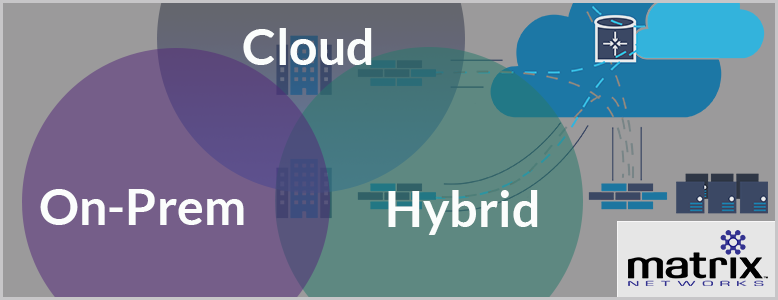



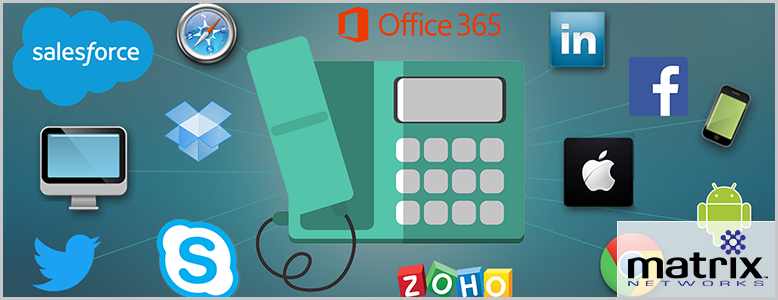
.png)




-2.png)
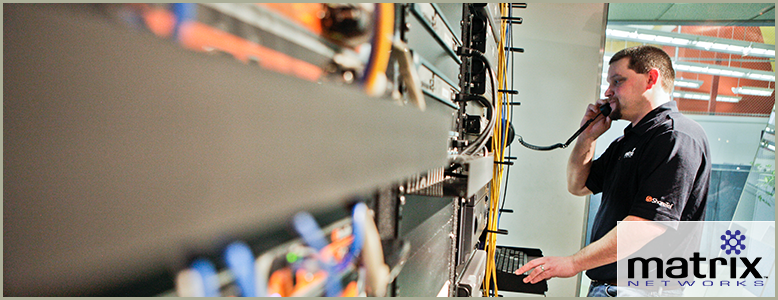










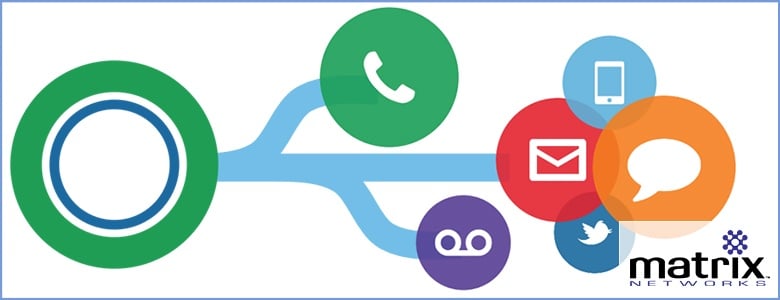







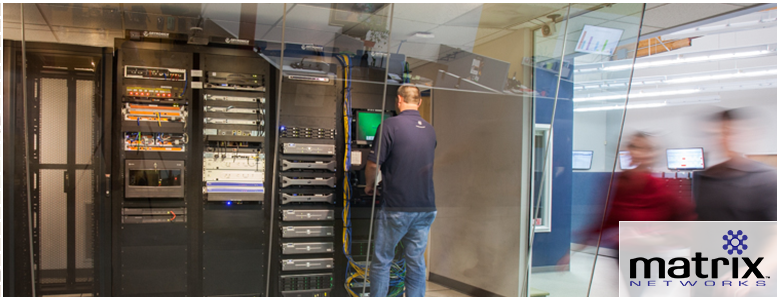









.svg%20(1).png?width=55&name=1200px-Logo_of_YouTube_(2015-2017).svg%20(1).png)

